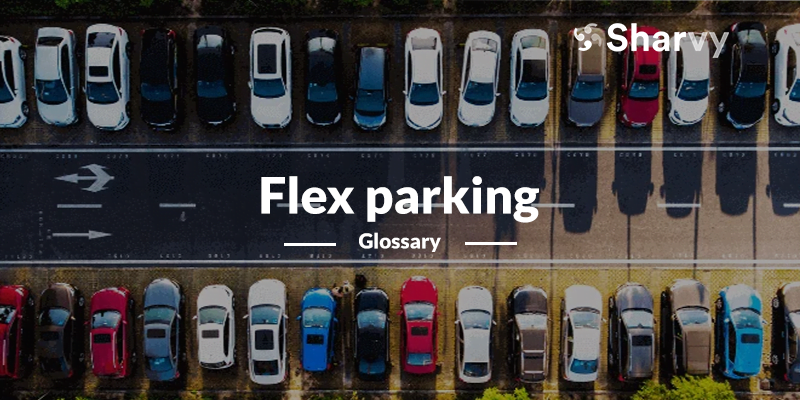What is flex parking? – Definition
Flex parking means sharing the parking spaces allocated to a company among its employees. In other words, it means multiplying the number of parking spaces at zero marginal cost.
Indeed, let’s recall that even today, many company parking lots operate with many free spaces and assigned areas. However, most of the time, the assigned spaces are dedicated to directors, managers, and privileged employees. However, the latter are increasingly mobile and are often on business trips. As a result, these named parking spaces remain vacant most of the time.
Therefore, the idea of flex parking is to share all the parking spaces with all or part of the employees, particularly these assigned parking spaces. To achieve this, flex parking requires that the holders of these spaces communicate regularly about the use or availability of the areas for the coming days. At the same time, the employees issue their request, verbally or more officially, through a dedicated application to reserve their parking space.
As a result, flex parking gradually breaks down the hierarchies that may have developed over time and dramatically improves employees’ occupancy rate and parking experience by reducing frustration.
Why is flex parking gaining momentum in recent years?
Several factors can explain it. On the one hand, let’s remember that today, the car remains the priority means of transportation to get to work. On the other hand, as a result, the need for employee parking remains and sometimes increases, which often leads to complex management of company parking.
At the same time, and paradoxically, the average occupancy rate of company parking lots fluctuates between 70% and 90%. Therefore, it is easy to understand the frustration of some employees, as many (named) spaces remain vacant, and the company parking lots are thus under-utilized and poorly optimized.
Moreover, the number of available parking spaces is increasing over time, as telecommuting has become a permanent feature of companies, and this hybrid model is gradually becoming the new norm.
Today, companies are becoming aware of the importance of optimizing the management and occupancy rate of their parking lots, whether to optimize their costs or improve their employees’ well-being and quality of life. This is why flex parking has been gaining momentum in recent years, mainly because it facilitates the arrival on-site and guarantees a positive parking experience for employees.
Three examples of recurrent problems to which flex parking responds!
Lack of parking space for many employees : you will rarely see all your employees on-site simultaneously. Moreover, with the democratization of telecommuting, business trips, vacations, and people coming by public transportation, flex parking can double the number of employees with access to parking.
- The considerable number of named and unoccupied spaces : by opting for flex parking, the objective is also to optimize the occupancy rate of the latter. Therefore, it makes sense to create a system/tool that allows parking space holders to declare the days they will not be using their spaces so that employees can reserve them. As a result, more employees can access the company parking lot and relieve the daily stress of searching for a space.
Stress and time wasted due to parking difficulties : on average, every morning, the time it takes an employee to find a parking space fluctuates between 6 and 15 minutes. However, by opting for flex parking, coupled with intelligent and digital management of this new organization, employees would benefit from a positive parking experience. On the other hand, it would be a worry and a (daily) burden less.

